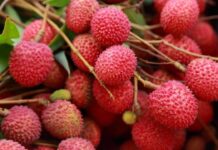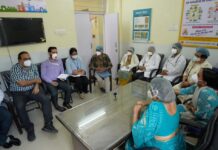
JHABUA, Madhya Pradesh, India: The remote village of Sad, pronounced Saad, is happy these days. Not just Sad, but some ten villages of Rama block, nestled among the beautiful undulating hills of Jhabua, are also looking up with hope. Jhabua, in Madhya Pradesh, also happens to be one of India’s most backward districts.
Most people here, like the rest of Jhabua, are tribals steeped in poverty. But a change, backed by women, is quietly reviving their bleak household economy. The change agents are murgi and pashu sakhis. Literally translated murgi means hen (fowl) and pashu animal. Sakhi means female friend. Thanks to FAO’s livestock project these community animal health workers have turned saviors of the poultry and goats reared in virtually every home here.
Sad has some 350 homes and their backyard poultry often bails them out in times of crisis. Selling a few chicken in the local market fetches good money. But then, there were waves of poultry deaths caused by viral infections leaving villagers distraught. Most often it was the viral New Castle disease that wiped away entire flocks.
“Mortality was as high as 75 percent …Our murgi sakhis have brought it down to around 40 percent,” says Prem Thakur of Sampark, that is implementing the project. Things have indeed changed since the murgi sakhis started vaccination and de-worming work about a year ago. Pushpa, a villager says, “The deaths have gone down …I had just two murgis …I now have 15. And we no longer have to borrow money…we sell the chicken in the local market.”
Dittu Bai Parmar, of the Patelia tribe, is a much sought after murgi sakhi in Sad and neighboring areas. A “twelfth pass” she underwent a 5-day residential training along with 16 other sakhis. Dittu Bai attributes the fall in poultry mortality mainly to the vaccination and deworming work carried out by the murgi sakhis, and following a few good management protocols.
According to her “Ranikhet”, the local name for New Castle, was the most common cause of bird mortality. Now if anyone in Sad or neighboring areas has a sick fowl Dittu Bai is readily available on a mobile phone. The vaccines and medicines generally come from the government’s animal hospital. ” ….When I visit a village for deworming or other treatment I also tell them about the vaccination dates.” Her rates for vaccination or de-worming services are as low as two rupees per fowl.
But now Dittu Bai also doubles as a pashu sakhi and can treat goats that give her ten rupees per animal treated. Earlier she and others like her would get a stipend of 1000 rupees. Now the women are on their own.
Dittu Bai earns anything between 1500 to 2000 rupees per month. Not a large sum by city standards but, as she says, “I don’t have to ask the moneylender when books or school uniforms have to be bought for the children…or for treatment of small ailments.”
In a way she and other women of the village now feel empowered with the knowledge they have gained and the little economic freedom it has brought. Dittu Bai’s is not the only success story.
Shruti Bai’s work as a murgi sakhi made her so popular with the villagers that she ran for the local polls and is now an elected sarpanch, head of the village council. Taking advantage of her poultry rearing technology her husband had bought some 400 chicks of Kadaknath, a rare indigenous breed that fetches a high price. This black chicken has unique high protein-low fat qualities and is also said to be an aphrodisiac. Selling their flock for an average of 500 rupees a piece Shruti Bai and her husband became overnight ‘millionaires’, earning over two lakh rupees (around $3,500). That, in local terms, is big money.
Now, everyone in the village wants to follow Shruti Bai’s example. And that includes non tribals who traditionally stayed away from poultry or goat rearing. SAPPLPP’s success is now being replicated. From ten villages Sampark will take it to 330 villages in Rama and Petlawad blocks with the help of a new donor. This time around they will have both men and women to take care of the poultry and goats.
Nilesh Desai, who heads Sampark says, “People have now begun looking at poultry as a commercial venture…After farming and labor-migration, it’s become the third option for income generation.”
In Jhirniya block of Khargone district in MP, some 200 kms from Indore, is SAPPLPP’s goat rearing project. If Rama block is backward, Jharnia is the back of beyond. It ranks among one of the poorest blocks in the country, 90 percent of its population tribals, mainly Bhil, Bhilala and Patelias.
 Here it is pashu sakhis who are rewriting the rules of the village economy. Like for poultry, the trick is the same, vaccination and de-worming of goats apart from managing a few food and health issues. This has led to a sharp decline in goat mortality. “Before our intervention it was 35 percent…It’s now down to four percent,” says Bharat Mogre, who heads AKRSP (Aga Khan Rural Support Program), FAO’s implementing partner.
Here it is pashu sakhis who are rewriting the rules of the village economy. Like for poultry, the trick is the same, vaccination and de-worming of goats apart from managing a few food and health issues. This has led to a sharp decline in goat mortality. “Before our intervention it was 35 percent…It’s now down to four percent,” says Bharat Mogre, who heads AKRSP (Aga Khan Rural Support Program), FAO’s implementing partner.
At Saka village’s primary school a meeting with a group of pashu sakhis is revealing. Neema Bai, of the Bhil community, explains how she goes about her work with the goats in the village and neighboring areas. “When a goat is sick in the village they inform me and I attend to the animal…Coming from other villages they often bring the sick animal along and I treat it,” she says. She and her colleague Tulsi Bai often go around the village forming groups of the women and speaking to them about how to keep their goats healthy. “Earlier they were indifferent….But now they come and listen to us…The villagers are more forthcoming in asking for treatment,” Neema Bai says.
The meeting with the pashu sakhis is interrupted by a bunch of goats being herded back home by local man Jaswant who peeps in. Does he find the pashu sakhis helpful? The villager breaks into a toothy smile, “Yes…they help us with the medicines and vaccines….Now very few of our goats die.” Jamuna Bai an old woman of the village agrees, “Ever since they started treatment the animals are not falling sick.”
A downside of the good health and fall in goat mortality is that Neema Bai and her friends’ earnings have dropped as morbidity has fallen. They earn anything between 1000 to 1500 rupees a month now. “During vaccination campaigns our earnings go up,” says Neema Bai who confessed to once treating a cow’s broken horn and earning 50 rupees.
What about the veterinary assistants from the government hospitals? Do the villagers get any support from them? “Earlier the government veterinary assistants would come…..But now they don’t need to come our animals are healthy,” says Neema Bai. “But they won’t go from door to door like we do,” she adds.
As a result of the pashu sakhi intervention the goat population in Jhirnia has shot up. A healthy goat can fetch around 7000 rupees and comes in handy for sundry, unexpected expenses. Moreover feeding children on goat milk ensures better nutrition. For the sakhis their dependence on husbands is gone. “We’re no longer begging….We stand on our own feet,” that’s the unanimous claim.
In the coming days the hands of these community animal health workers (CAHW) will be further strengthened as they will double as workers for both goats and poultry.
SAPPLPP is also being rolled out in Nagore district of Rajasthan where it will cover both goats and sheep. Above all, reduced mortality among poultry and small ruminants, as demonstrated, can go a long way in alleviating rural poverty not just in India but other poor rural economies as well.
-Courtesy FAO
In India the SAPPLPP is a joint project of FAO and the National Dairy Development Board (NDDB). The NGO implementing partners are Sampark Samaj Sevi Sansthan in Rama Block of Jhabua, Madhya Pradesh (MP) and the Aga Khan Rural Support Program (AKRSP) in Jhirniya Block of Khargone district also in MP. In Nagore district of Rajasthan the implementing partner is the Urmul Khejadi Sansthan.






